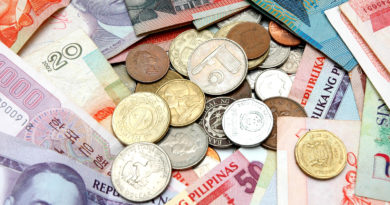5 Types of Bank Accounts You Should Have
What do you use your bank account for? Some people set up their first bank accounts as a way to receive their salaries from their employer. Others maximize their options and set up bank accounts for various present needs and future financial goals. This way, they’ll have an easier time setting aside funds for their day-to-day expenses as well as the things that they are saving up for.
Perhaps you want to do the same and expand the number of bank accounts under your name. In that case, it’s smart to give a bit of thought to the purpose of the bank accounts that you will be opening.
This will help you determine whether the kinds of bank accounts you have offer features that support exactly what you’re trying to achieve with your money. Below are the different types of accounts that you should consider adding to your banking portfolio:
Time Deposit Account
If you’re thinking about what your financial capabilities will look like five, ten, or 15 years down the line, you’re also probably giving a bit of thought to how you can sustain the current value of your money.
There are different ways of achieving this, but many of them require an initial investment. One of the safest and perhaps most accessible ways to protect your finances would be to put your money into a time deposit account. A time deposit is an interest-bearing bank account with a specific date of maturity. In exchange for a predetermined—and typically higher than usual—interest rate, you’re required to leave your money intact in the bank account until it matures. This is an option you should check out if you have a fund that you don’t plan to use in the next few years.
Spending Account
Many people find it difficult to save and spend money when they’re using one account for all of their finances. If you’re in the same situation, perhaps separating your accounts would help. You can dedicate one account to spending, for instance. But don’t just use any account that you have. Your spending account and the bank where you’ll open it should match your spending needs and habits. If you like purchasing items using cash, you should go with a bank that has a lot of ATMs and branches in the areas where you frequently shop. This way, you won’t have a hard time accessing your money when you need to pay for your purchases. If you prefer to pay using digital apps and wallets, find a bank that will allow you to transfer to these channels for free.
Emergency Account
One of the first steps to achieving financial stability is having an emergency fund. There are different ideas as to how much an emergency fund should contain, but the consensus is that it should be able to sustain your current lifestyle for a few months in case you get cut off from your source of income.
Alternatively, it should be able to tide you over in case you come across a significant and unexpected need. Either way, you should endeavor to build up your emergency fund and leave it alone until you have a sufficient reason to use it. Some people accomplish this task by making their emergency funds difficult to access. For example, they might open an account that doesn’t offer an ATM card. This reduces the temptation to withdraw the money for less important purposes, as the only way to access the fund is to go to the bank itself. This method can be helpful if you’re worried about having enough self-discipline to leave your emergency funds untouched for a long time.
Savings Account
A savings account can serve as a repository for money that you plan to use for various purposes. For instance, you might be looking forward to an overseas holiday by the end of the year, and you’re using your savings account to set aside enough money to finance that goal. Or maybe you pay your insurance quarterly, and you’re setting aside your premiums in this savings account. Putting your money into a savings account allows it to earn some interest and keeps it more secure than simply having your cash on hand.
However, it’s important to remember that some savings accounts require a maintaining balance. If you have reached your financial goals and plan to withdraw the amount, you’ll need to leave enough to cover the minimum. Consider, then, if it’s a good idea to find a savings account with a minimum maintaining balance, if any at all. This way, you can avoid fees and deductions in case your funds drop below a specific threshold.
Foreign Currency Account
Many Filipinos have relatives who are working overseas. There are also many local professionals in the country who have foreign companies as employers or clients. If you belong to either group, you might find that having a foreign currency account makes handling your finances a much easier task. Having this type of account under your name will save you from having to go through complicated processes just to convert your family members’ remittances or your salary into a currency that you can use in the Philippines.
Maximize your financial capabilities by using bank accounts that will enable you to manage and grow your finances better. Check out these types of accounts and see which ones among them would make great additions to your banking portfolio.




